Almond bushes require the right growing conditions in order to grow, thrive, and produce flowers. Proper care is always essential for healthy plant development. That being said, read on since we have researched why your almond bush is not blooming and what to do about it.
Dwarf flowering almonds usually produce clusters of pink and white flowers during the spring. The main reasons the plant does not bloom could be inadequate light or water. You can promote healthy growth by creating the optimal conditions that are necessary for them to thrive.
Almond bushes must be provided with proper care to encourage bud development and produce flowers. In this article, we will guide you with the ways how to create an environment well-suited for this plant. Keep reading and find out more!
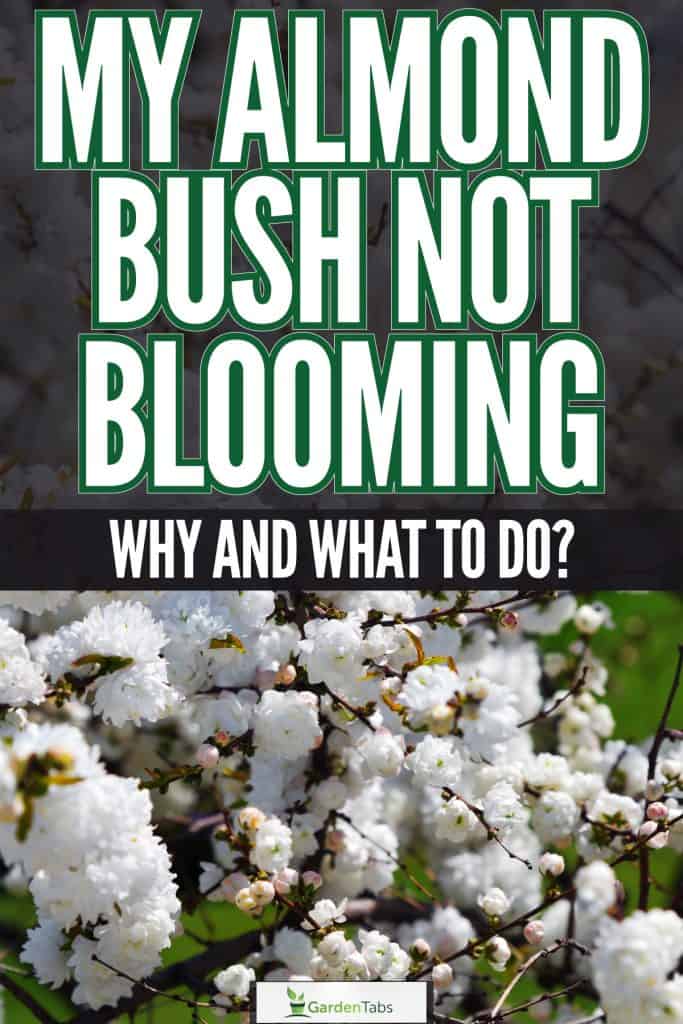
How Much Light And Water Do Almond Bushes Need?
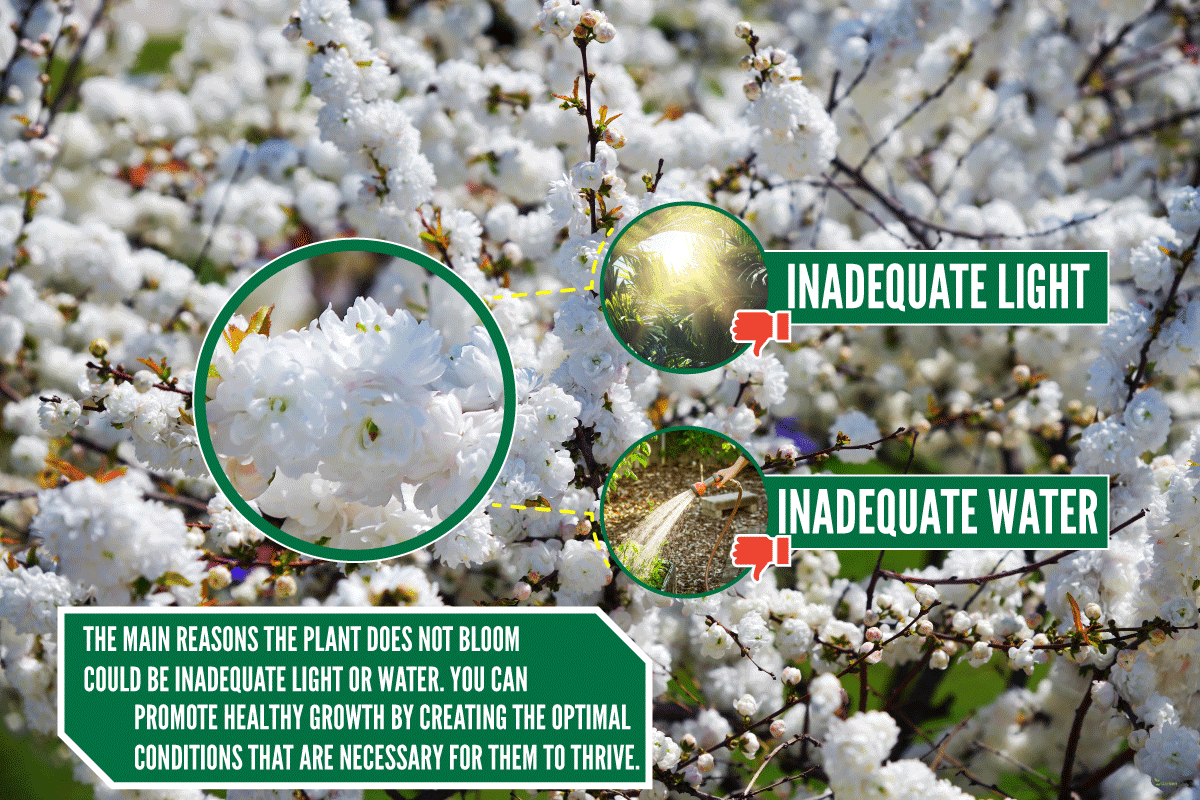
Sunlight exposure and water are two basic needs of plants. Almond bushes, however, must be given the right growing condition - no more and no less - otherwise, the plant won't produce flowers.
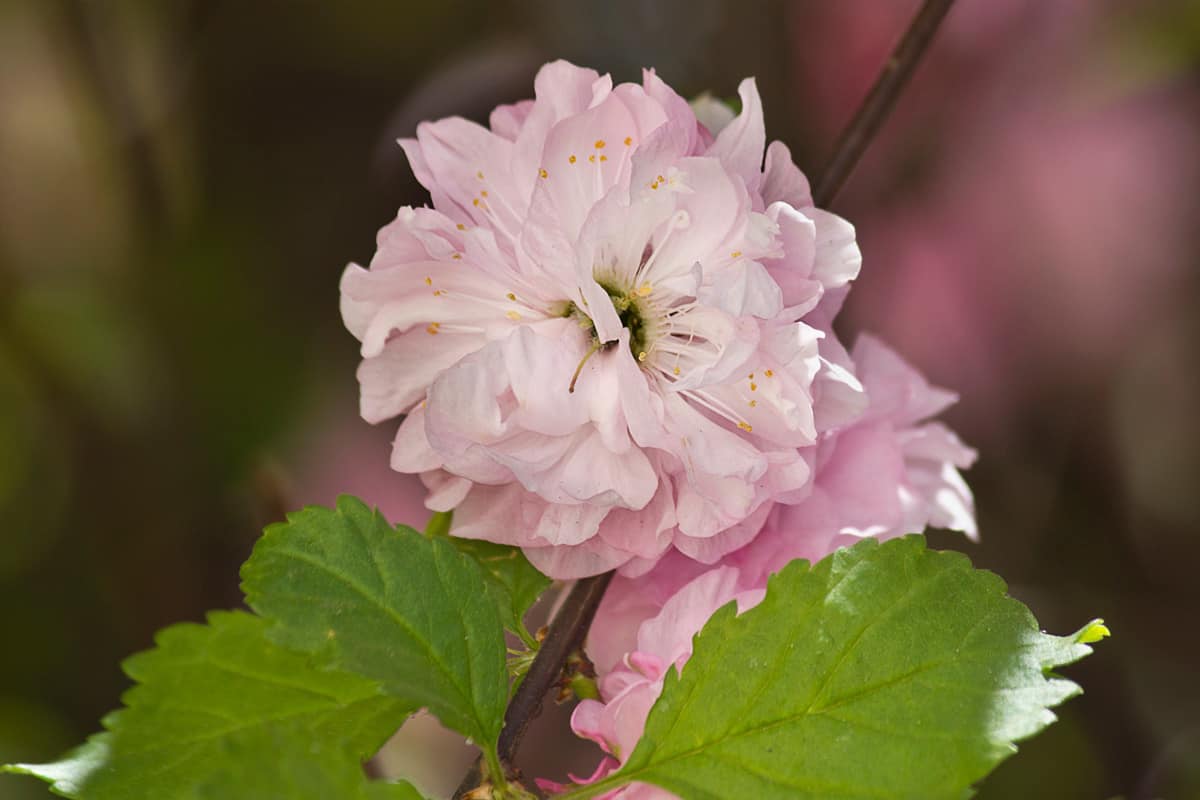
Lighting
Almond bushes thrive best in full sun and need at least 4 to 5 hours of light exposure a day. After receiving direct sunlight, you could place the plant in a partially lit area in your garden. Note that it would tolerate the shade, but this kind of growing condition might not encourage seed and flower production.
Watering
If, however, the Almond bush still hasn't produced any flowers, the plant may be under or overwatered. Generally, it prefers moist but not waterlogged environments. Never let the soil be totally dry in between hydration, and always keep the potting mix damp but never let water pool in the container or garden bed.
Check out Miracle-Gro Moisture Control Potting Mix on Amazon.
To determine whether the plant lacks water or is overly hydrated, check its leaves. Lacking water results in yellowing or browning wilted foliage. Whereas new growth discolors and becomes brittle when overwatered.
If it has began producing flowers, it should be hydrated at least two to three times a week. However, the requirement may vary depending on the general climate and environmental conditions.
Will Fertilizer Help Almonds Bloom?
Compost and other organic fertilizers are the best way to augment the soil and promote blooming. Once the growing medium is rich enough, the plant does not require additional feeding through artificially produced amendments.
Check out Miracle-Gro All-Purpose Plant Nutrition Granules on Amazon.
Nitrogen-based compounds will encourage leaf growth and inhibit bloom production. Phosphorus is a macronutrient essential for bud development since it stimulates seed formation. If you intend to feed your plant, do so in the early spring and use fertilizers with a high phosphorus content.
Check out RAW-Phosphorus Plant Nutrient on Amazon.
Do l Need To Prune My Almond Bushes?
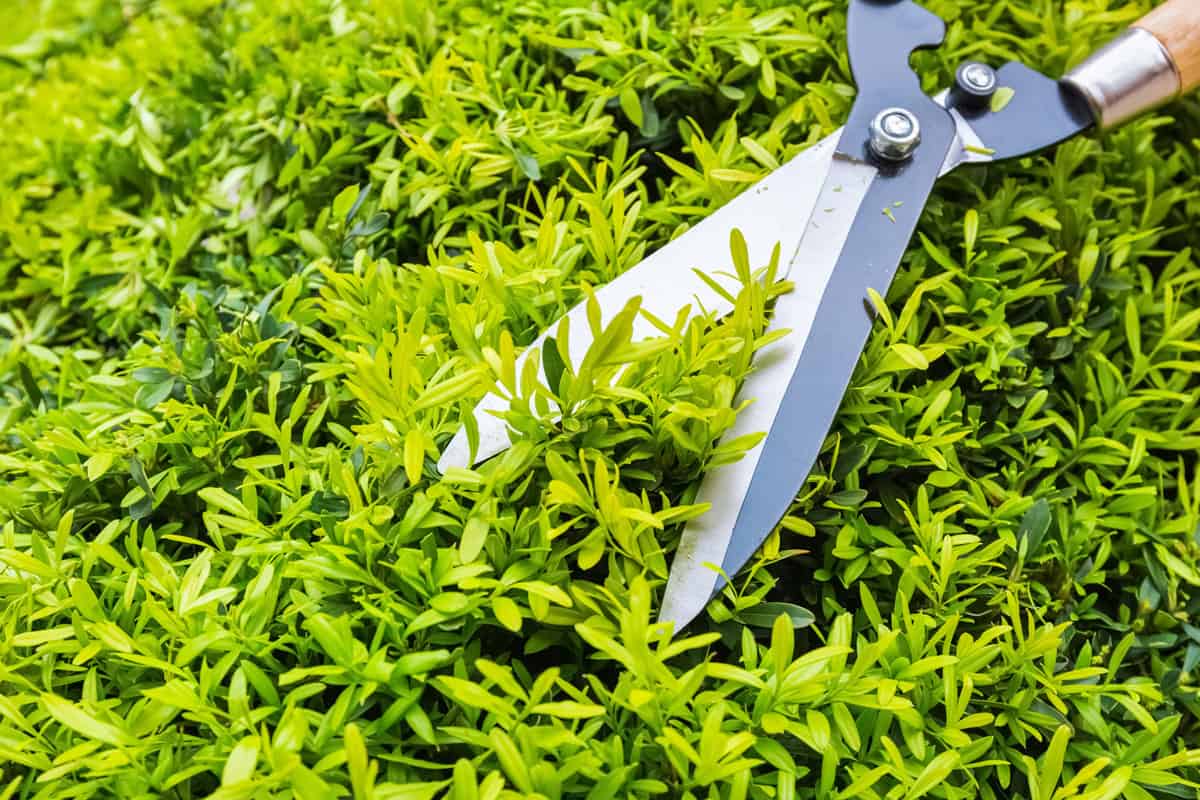
Constant, regular pruning distinguishes almond bushes from other plants. They need to be cut and cleared regularly to stimulate the production of healthy new blooms. The plant tends to grow wild and unruly if left untrimmed for long periods.
The best time to prune your almond bush is right after the flowers wilt. Dieback consumes the plant's nutrition and energy, and cutting dead blooms and stems will rejuvenate the bush. Also, it is an excellent way to shape and control the plant for a uniform, neat-looking hedge.
One reason your almond bush is not producing blooms is pruning too prematurely. You can remedy this by cutting the branches a few inches from the ground level. It would delay the production of flowers but eventually, the plant will regrow and emerge in a healthier state.
What Other Factors Are Essential For Almond Bush Care?
Temperature, humidity, and soil are all essential for healthy growth and development. It is important to at least replicate the plant's natural growing condition to promote blooming.
Temperature And Humidity
Almond bushes are native to Asia, and the Mediterranean yet can grow in various climates. Nevertheless, to encourage flower production in the spring, the plant must be exposed to only a short period of cool weather.
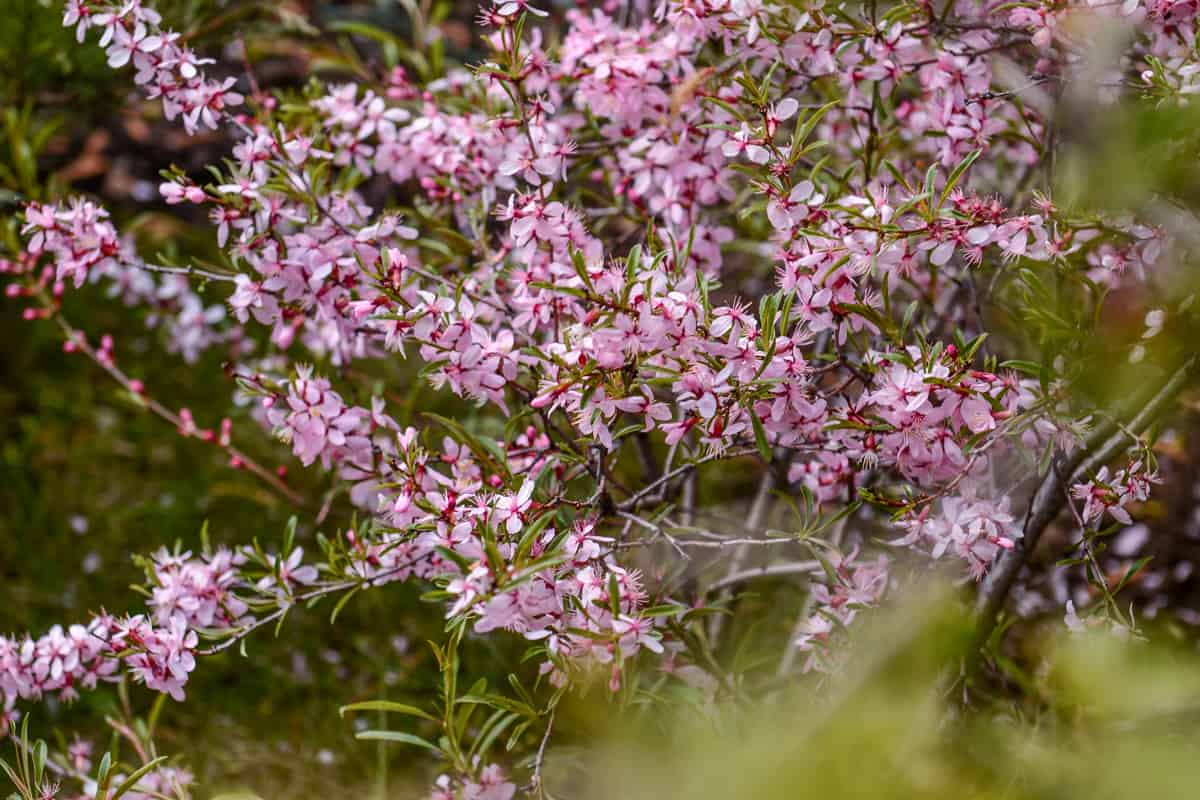
If the air is too dry and humidity is low, surround your almond bushes with other growth and vegetation, or place them in a sunny location indoors - a west and east-facing window is ideal.
Note that the plants can tolerate being placed inside the house for a relatively short period. They may need to be relocated outside when the weather condition is appropriate for their development.
Soil
Almond bushes grow in almost all planting mediums, but they thrive best when planted in rich, well-draining, and loamy environments. The plant generally prefers slightly acidic to neutral soil conditions to facilitate better development.
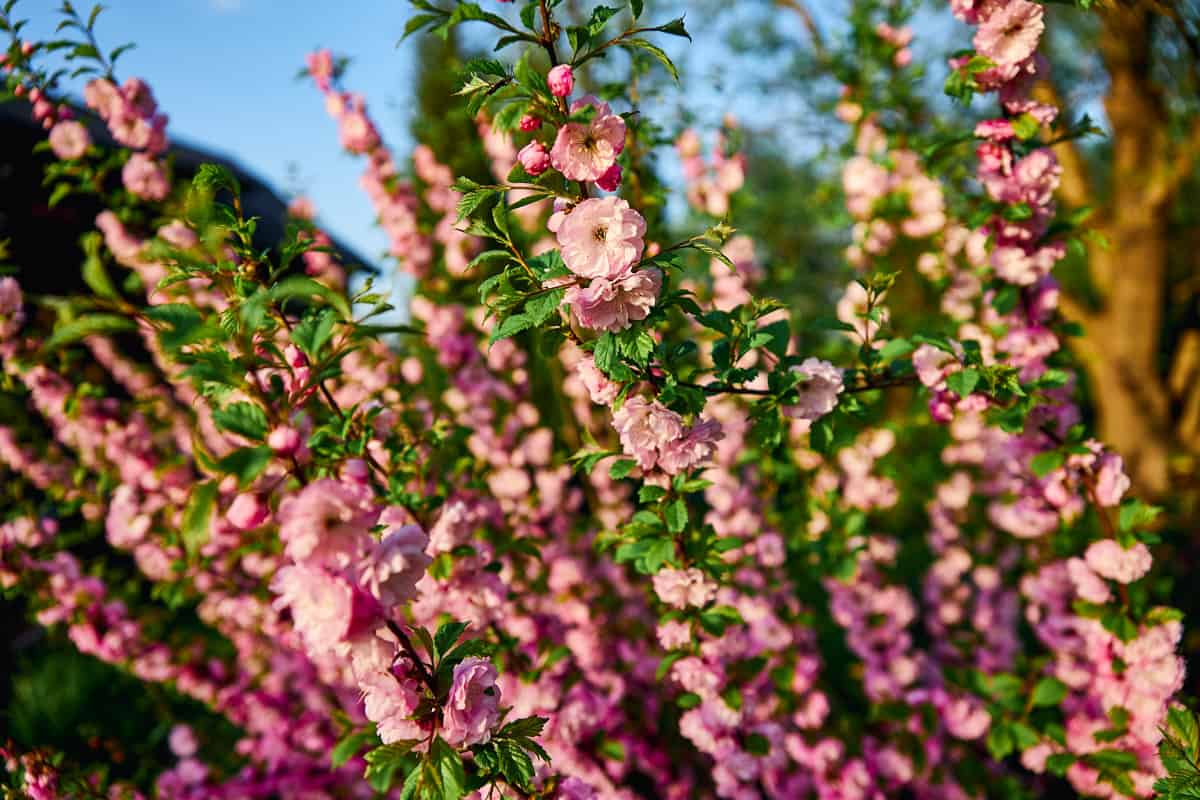
If the soil is too compact, simply amend the growing medium by adding perlite or crushed gravel and sand to improve drainage.
You can add a layer of mulch on top of the potting mix or garden bed to help the soil retain moisture during periods of dry spells and to maintain adequate soil temperature amidst cold weather.
What Pests And Diseases Affect Almond Growth?
Like most flowering plant varieties, the almond bush is prone to several pests and diseases that affect its health and growth. Verticillium wilt, leaf spot, leaf discoloration, and powdery mildew are among the most common diseases that affect the plant.
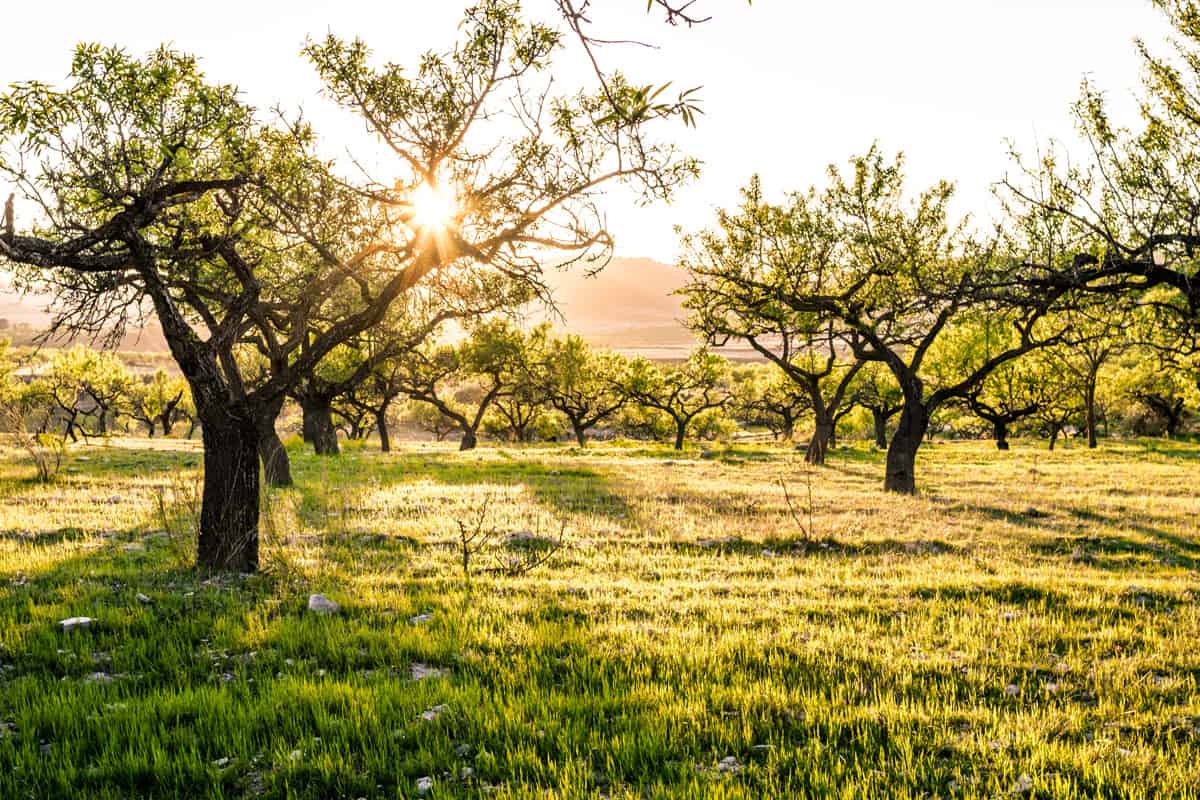
Verticillium Wilt
The usual manifestation of verticillium wilt includes the sudden yellowing and wilting of your shrub’s branches and stems. To ascertain that the plant is infected by this disease, peel off the stem’s outer layer. The presence of brown or green streaks underneath the surface confirms the infection.
Shrubs infected with this disease will not survive and may eventually wilt and die. Nonetheless, you can prolong your plant’s lifespan by providing adequate hydration and applying fertilizer properly.
Leaf Discoloration
Yellowing of the leaves in the absence of blooms may also be attributed to nutrient deficiency. Prune off dead leaves, then apply foliar fertilizers to control the condition. Mist the foliage with appropriate fertilizers.
Leaf Spot
Leaf spot is caused by fungi and is often prevalent in moist and wet environmental conditions. Since almond bushes have particular watering requirements, the plant is more prone to this disease.
Yellow, black, or orange spots appear on infected foliage and may cause leaves to drop. To remedy the issue, you might need to remove damaged foliage and prune the shrub to improve air circulation and allow light penetration.
Water your plant at the base toward the ground level to avoid splattering the foliage. This will prevent disease spreading.
Powdery Mildew
Powdery mildew is a type of fungi that spread by wind. They rest on plant structures and grow and spread to consume its nutrients. They thrive on moist and humid conditions and are prevalent during cold or rainy months.
Initially, white patches can grow on the leaf's surface and cause them to curl. Reddish blotches and black spots may also develop on the leaf surface.
The best way to prevent fungi spreading is by avoiding overcrowding plants and allowing enough air circulation between growths. All-purpose fungicides in semi-diluted form are effective in controlling their growth and spread.
Can I Propagate A Flowering Almond Bush?
You can easily propagate an Almond bush in two simple ways - through softwood and hardwood cuttings. Trim stems at least five to seven inches long for softwoods and 12 to 16 inches in length for hardwoods.
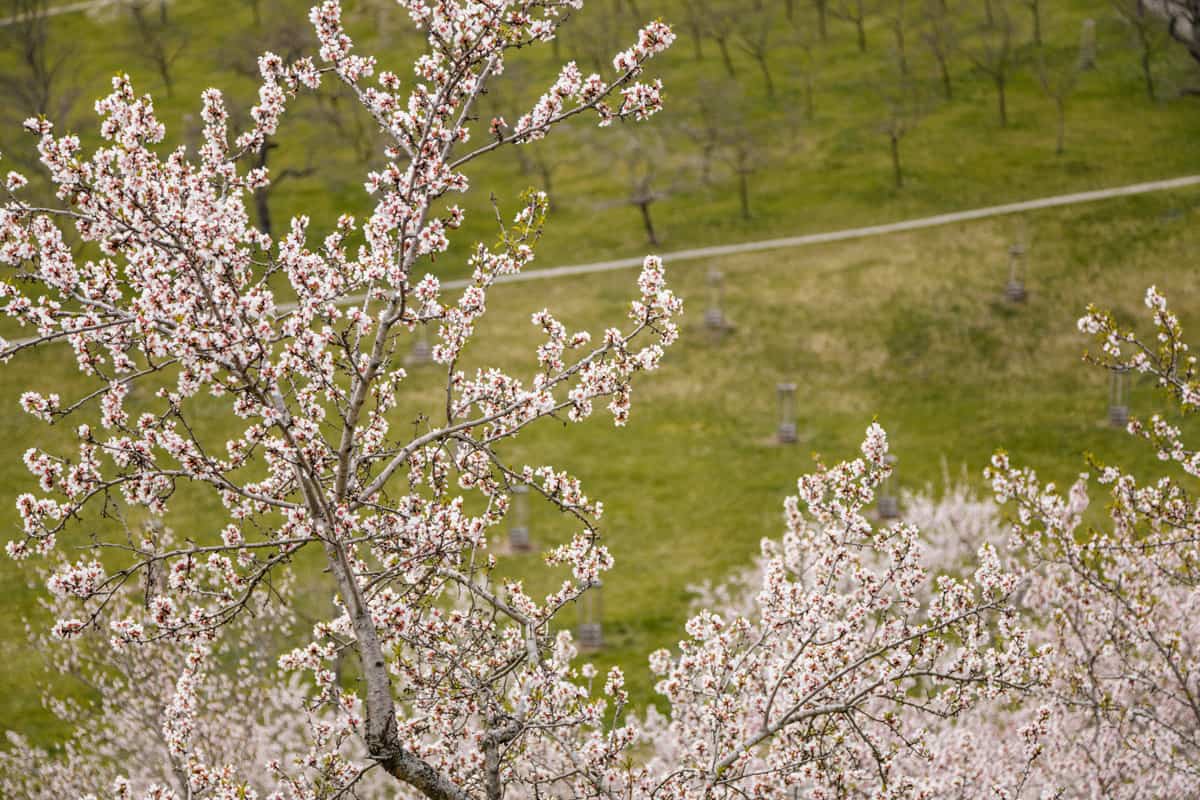
Remove the leaves located below the stem, then dip your cuttings in a rooting hormone. Make a hole in the soil by gently placing the shoots in the potting mix or the ground, then hydrate the plant as needed.
In certain instances, not all cuttings survive - some will begin to wilt and die. But don't worry! It occurs naturally, especially when the shoots are too young when cut. It is suggested to trim hardwood stems since they have a higher probability of growing and developing.
Can You Grow Sweet Almond Bush In A Container?
Even though sweet almond bushes are grown as hedges and act as natural dividers, they can be cultivated in containers and plant boxes. As long as you provide the plant with its required growing conditions, then its development is not compromised.
In Closing
The best way to keep your almond bush-producing blooms is by direct sunlight, the right amount of soil moisture, organic fertilizers, and regular pruning. We hope the article helped you with the ways you can encourage your plant to produce flowers.
You might also be interested in these topics:
Can Almond Trees Grow Indoors [And How To?] (Quick Guide For Beginners)

